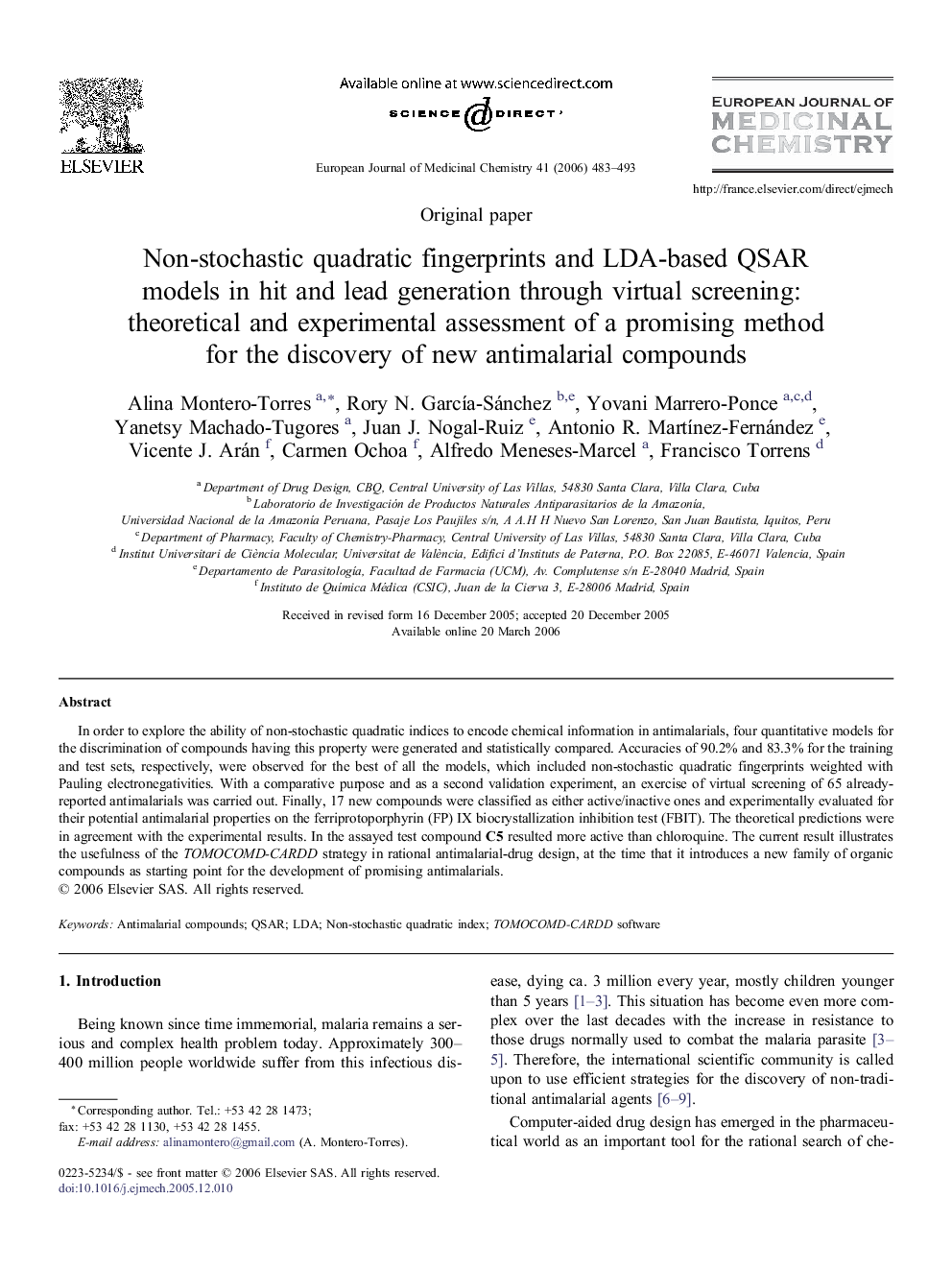| Article ID | Journal | Published Year | Pages | File Type |
|---|---|---|---|---|
| 1393553 | European Journal of Medicinal Chemistry | 2006 | 11 Pages |
In order to explore the ability of non-stochastic quadratic indices to encode chemical information in antimalarials, four quantitative models for the discrimination of compounds having this property were generated and statistically compared. Accuracies of 90.2% and 83.3% for the training and test sets, respectively, were observed for the best of all the models, which included non-stochastic quadratic fingerprints weighted with Pauling electronegativities. With a comparative purpose and as a second validation experiment, an exercise of virtual screening of 65 already-reported antimalarials was carried out. Finally, 17 new compounds were classified as either active/inactive ones and experimentally evaluated for their potential antimalarial properties on the ferriprotoporphyrin (FP) IX biocrystallization inhibition test (FBIT). The theoretical predictions were in agreement with the experimental results. In the assayed test compound C5 resulted more active than chloroquine. The current result illustrates the usefulness of the TOMOCOMD-CARDD strategy in rational antimalarial-drug design, at the time that it introduces a new family of organic compounds as starting point for the development of promising antimalarials.
Graphical abstractFigure optionsDownload full-size imageDownload as PowerPoint slide
